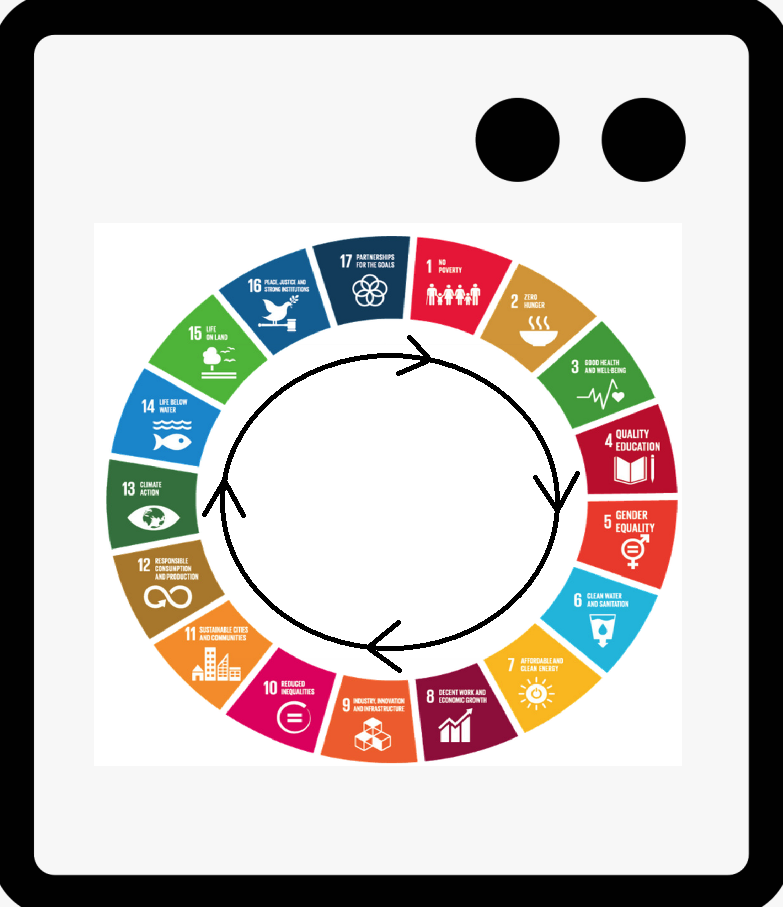Impact investment is rapidly growing. Why? What are the developments? And how does this business pushes towards the transition to a sustainable and inclusive society? In 6 articles we will highlight the developments, opportunities and risks of Purpose & Impact investment. This is the third article. In this article more about impact investing and the UN Sustainable Development Goals (SDGs).
The UN, which celebrates its 75th anniversary in 2020, has a great effect on business through the Sustainable Development Goals (SDGs). It seems that now, more than ever, companies understand that solving global issues is also part of business. As the SDGs are on one third of their term, companies and investors start to embrace the SDGs as a way of showing their societal performance. Investors are embracing companies which show a contribution to SDGs. Companies themselves are more than willing to claim their share. Environmental, Social and Governance (ESG) rating agencies include SDG performance in their assessment and create fancy looking SDG rating score dashboards. Sounds good on paper, but it’s not all positive in practice…
Growth from ESG towards SDG investment?
It seems to make sense: from ESG investing towards SDG investing. Moving from a company agenda to a global agenda. More on ESG investing in article 1 of these series. Soon after the SDGs were launched, the first initiatives for a responsible and SDG aligned investment funds started. The UN embraced this as large investments are needed to achieve the SDGS, not only by governments, but also by private parties.
As of 2017 more private parties started to combine their responsible investment programs with SDGs, like the Principle for Responsible Investment (PRI) initiative and the Global Impact Investing Network. Resulting in a number of institutional investors setting up funds or allocating the SDGs to their existing funds. Not only does this satisfy a broad(er) range of the stakeholders, it also provides long-term value creation which benefits the environment and society as a whole.
SDG rating
In general investors base their investments on third party intelligence, as this is seen as the way to assess the societal impact of a company. There are a few large ‘third party’ or ESG-rating agencies which base their ratings on:
- Own/diverse methodology and big data;
- Annual reporting of companies;
- Public information provided on various websites;
- For specific cases, additional ESG-questionnaires;
- And in even less cases, company Investors Relation (IR) interactions.
Despite the diverse methodologies used it is common practice to provide the SDG rating: some tools include ISS, MSCI, Sustainalitics as it will give impact investors a better insight in the real impact of a company.
SDG washing
 Overall it seems very interesting to bring SDGs into your organization and attract investors. In order to understand if loans via public traded bonds will have a positive societal effect, there are standards available which can be used by issuers to clarify the objective of a bond. The so-called Green Bond Principles (GBP) has been used for years and also the Social Bond Principals are applicable (note: the new EU Taxonomy for sustainable activities might replace these, at least in the EU). The UN will launch their own standard on SDG bonds: it’s currently in ‘public consultation’ phase. According to UNDP SDG Impacts director Elizabeth Boggs Davidsen, the standards will help against ‘SDG washing’. With this she means labelling investment opportunities as SDG, while it’s not or hard to determine. What the UNDP sees are misleading funds and companies, using the SDGs as the objective while in fact it’s just about getting impact investors on board. And that’s serious problem for three reasons:
Overall it seems very interesting to bring SDGs into your organization and attract investors. In order to understand if loans via public traded bonds will have a positive societal effect, there are standards available which can be used by issuers to clarify the objective of a bond. The so-called Green Bond Principles (GBP) has been used for years and also the Social Bond Principals are applicable (note: the new EU Taxonomy for sustainable activities might replace these, at least in the EU). The UN will launch their own standard on SDG bonds: it’s currently in ‘public consultation’ phase. According to UNDP SDG Impacts director Elizabeth Boggs Davidsen, the standards will help against ‘SDG washing’. With this she means labelling investment opportunities as SDG, while it’s not or hard to determine. What the UNDP sees are misleading funds and companies, using the SDGs as the objective while in fact it’s just about getting impact investors on board. And that’s serious problem for three reasons:
- On purpose misleading could lead to mistrust of the companies in general;
- The risk that the SDGs will not be achieved in 2030;
- A company has a very limited effect on improving society.
The term ‘SDG washing’ is derived from ‘Greenwashing’, referring to the claim of a company or a product/service being good for the environment, while it’s not. One of the objectives of the already mentioned EU-Taxonomy is to reduce Greenwashing. SDG washing seems to go hand in hand with the poor quality of sustainability reporting. While the financial part of an annual report has an internal and external team on it, sustainability reporting is even within large companies just the focus of a few. And with SDG alignment it’s putting old wine in new wineskins. Only a few companies build their strategy on the SDG contributions. Resulting in companies exaggerate once mapping their sustainability efforts towards the SDGs. There are control mechanisms in place to prevent this risk, for instance the GRI has published a reporting standard for SDGs and external validation is a possibility to create a trusted SDG claim.
SDG opportunity
The awareness and willingness to take action on most of the SDGs will have its effect. For companies even more as it touches two sides: the societal impact and the financial impact. The latter can create a big shift from short-term profit towards long-term performance (more on this in article 6 of these series). Societal impact will have all kinds of internal and external positive effects on society and the 17 SDGs. This raises another question: ”There are 17 SDGs, should a company work and report on their impact of all those 17?” A company will have an impact on all the 17 goals, but to create a trusted (unwashed) impact, focus will lead to change. We believe it’s stronger if the scope is narrowed to maximum of 3 SDGs and within those 3 SDGs, a scoping is needed to select (the 169 possible) SDG-targets. This scope should fit the core-business and the strategy and purpose of a company. The impact will affect not only the companies’ agenda, but above all the global agenda. With a credible reporting and IR in place, this will have a solid effect on the ESG-rating of a company. More on grasping ESG opportunities in article 2 of this series.
SDG investing
Increasingly more companies are reporting on their SDGs performance, creating an opportunity for investors to invest based on SDG. We have argued that the UN SDG framework in potential can be a guidance for companies and responsible investors to aim their effort to. But we also have seen that SDG investing by private parties is still relatively small and that ESG investing is leading. This can work both ways as ESG is not excluding SDG, moreover, incorporate SDG in your strategy will have a positive effect on your ESG performance. And although there is enough to improve on the credibility of claims, SDGs framework is very convenient for companies and investor to invest with impact.
About the authors

Martin de Jong is founder of Empact, impact consultancy and working for (international) clients on Societal Strategy, ESG and Impact Valuation. He is former director Societal Value VodafoneZiggo and Sustainable Business Manager Vodafone PLC. He is guest lecturer on various universities on sustainable business.
Anne Rademaker is founder of Rademaker Consulting and working with strategic partners (both public and private) to accelerate the transition to a global circular economy. Anne is working with Martin for Empacts ESG & Impact clients. She is a former Senior Consultant at EY with extensive knowledge on Finance, Risk and Process management.
More info on Empact.






